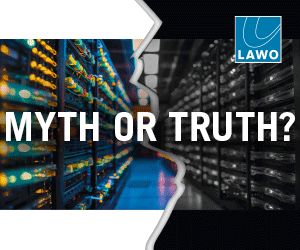The commercial teleport industry had global revenues of $19 billion in 2010 and Robert Bell, executive director, World Teleport Association, in conversation with Supriya Srinivas believes that the MENA region in particular is on a growth curve for years to come. How do you view the growth of the teleport sector in the Middle East […]

The commercial teleport industry had global revenues of $19 billion in 2010 and Robert Bell, executive director, World Teleport Association, in conversation with Supriya Srinivas believes that the MENA region in particular is on a growth curve for years to come.
How do you view the growth of the teleport sector in the Middle East and in North Africa over the past few years?
The Middle East and North Africa has recently been the worlds fastest growing region for teleport operators. The growth is driven by two sectors: direct-to-home television and internet access. Dubai has played a significant role in DTH through a strategy to provide secure, high-quality facilities like Dubai Media City to content owners, particularly Middle Eastern companies that have traditionally located their broadcast operations in Europe. The growth in the Middle East and North Africa is part of the global trend toward the broader spread of knowledge and interactive information exchange to citizens, with this region being the latest to hear the call. As home to cultures that value tradition, the region will grapple with the challenge of admitting diversity of views into local culture, which is the inevitable result of greater freedom of expression. Every culture in the world is grappling with this challenge, to a greater or lesser extent.
Your report, What Customers Want: Enterprise 2011 (see box) has stated that the industry is recession proof. As we go towards what is possibly a deeper recession, do you believe the industry will continue to prove to be resilient?
“Recession-proof ” may be overstating the case, but organisations of all sizes have realised the immense value that communication creates, and so tend to maintain or increase spending on information and communications technologies regardless of economic conditions. When an investment pays off handsomely year-afteryear, you keep making that investment. The broadcast side of the business faces greater challenges in some parts of the world, but in the Middle East and North Africa, it appears to be on a growth curve for years to come. So for the region, I would say that satellites have great potential that is only beginning to be realised.
What are the big findings from your report What Customers Want: Enterprise 2011?
The major finding of the report is that enterprise customers are uniquely “sticky” [but] that there is no room for complacency among service providers. Enterprise users largely turn to satellites for point-to-multipoint connectivity, which is not the strong suit of satellites. Satellites allows [enterprise customers] to reach remote sites where terrestrial alternatives are few, or where satellites offers a much higher quality of service than can be gained from terrestrial circuits. But satellites are challenged to provide enough capacity at affordable rates, and to support intensive interactivity with space-based systems that experience high latency. We spoke with the CEO of an ISP in Lebanon, which currently maintains its primary link to the internet via satellite but is looking forward to the activation of a submarine cable that will sharply increase available capacity. The senior IT executive of a cruise line is pushing his vendor to provide WiFi and microwave connectivity at all its major ports so that service can be offloaded from the satellite as often as possible during a voyage. The CIO of a retail chain recently changed from an all-satellite network to a hybrid satellite-terrestrial network managed by the same vendor. This meets the demand of stores for higher bandwidth but satellites retain a major role, because of quality of service. At any given time, the DSL connection to 5% of [that particular retail chain] is down and the satellite becomes their primary path. As long as the industry remains nimble and adapts to changing customer demand, its core value proposition is likely to remain secure.













































































